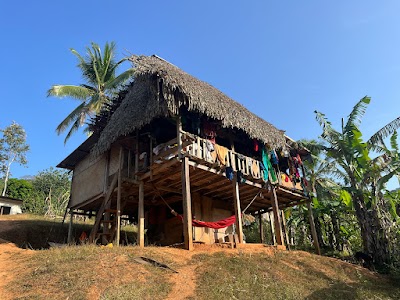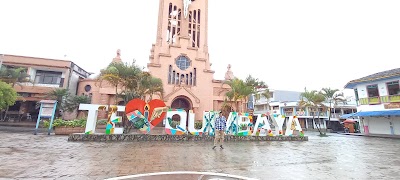La Palma (La Palma)
Related Places
Overview
La Palma is a small yet vibrant town nestled in the Darién Province of Panama. Situated at the confluence of the Río Iglesa and the expansive Tuira River, this serene locale is a true emblem of natural beauty and rich cultural heritage.
Historical Roots
The history of La Palma dates back to the early indigenous tribes who settled along the banks of the Río Iglesa. These early inhabitants utilized the river for fishing, transportation, and as a vital source of fresh water. The region's lush vegetation and fertile land made it an ideal spot for establishing a community. Over the years, settlers from various parts of Panama, as well as from Spain, arrived, further enriching the town’s cultural tapestry.
Architectural Evolution
The development of La Palma is a fascinating journey that encapsulates a blend of traditional and colonial influences. The original buildings were primarily wooden huts constructed on stilts to safeguard against flooding during the rainy season. These simple yet practical structures showcased the resourcefulness of the early settlers, allowing air to circulate and keeping the interiors cooler in the tropical climate.
As time went on, more permanent buildings began to emerge in La Palma. One of the earliest significant structures was the church, built using a combination of local wood and stone. This church reflects classical Spanish architecture intertwined with indigenous techniques and has served not only as a place of worship but also as a communal gathering point, reinforcing the close-knit nature of the community.
Infrastructure Development
The 20th century marked a pivotal era for infrastructure development in La Palma. Roads were carved through the dense jungle, connecting the town to other parts of the province. This crucial expansion allowed for more efficient transportation of goods and resources, spurring economic growth. During this time, brick and mortar buildings began to replace some of the older wooden structures, giving the town a more modern appearance while still retaining its rustic charm.
Economy and Daily Life
The community of La Palma has long relied on the Río Iglesa for both daily activities and economic sustenance. Popular pastimes include fishing and small-scale agriculture. Local fishermen skillfully crafted dugout canoes from large tree trunks, which played a vital role in their livelihoods by allowing them to navigate the river and access plentiful fishing spots.
As La Palma grew, essential services like education and healthcare were established. A small clinic was built to address the medical needs of residents, often staffed by a traveling doctor who made rounds in more remote areas. At the same time, the first school opened its doors, with dedicated local teachers providing the foundation for many children to pursue further opportunities.
Cultural Celebrations
Festivals and celebrations are integral to the life of La Palma's residents. Each year, the town comes alive with vibrant colors and music during its local fiestas. These events typically feature traditional dances, food fairs, and religious processions, showcasing the community’s rich history and cultural diversity. Indigenous traditions are celebrated alongside modern customs, creating a lively tapestry that is distinctly La Palma.
A Testament to Resilience
Today, La Palma stands as a testament to the resilience and adaptability of its people. It has quietly transitioned from a small indigenous settlement into a town that honors its historical roots while embracing future possibilities. Although still remote and surrounded by the dense tropical forest of the Darién Gap, La Palma remains a vital hub within the province, embodying the spirit of community and connection that defines life along the Río Iglesa.






